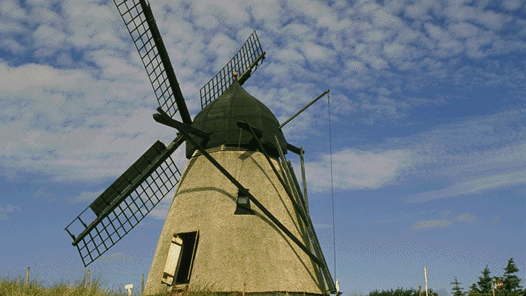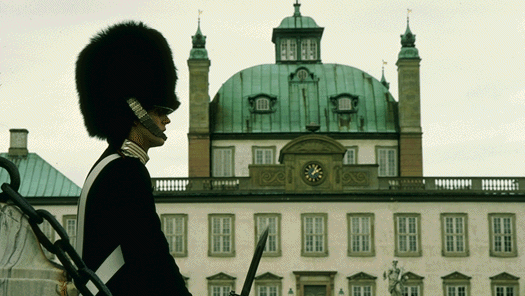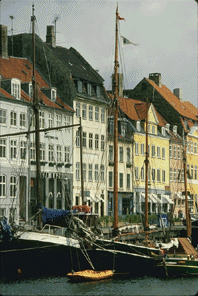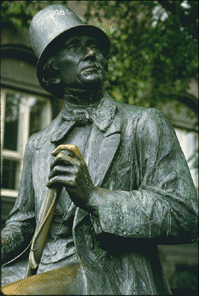
Denmark lies on the Jutland peninsula in northern Europe. Its terrain is low and flat (Denmark’s highest point is only 568 feet above sea level), making windmills ideal for harnessing the wind that blows across the land. More than half the arable land is used for growing cereals, and windmills were once commonly used to grind the grain into flour.

The site of present-day Copenhagen was settled as early as the 10th century, and Copenhagen has been the Danish capital since 1445. The Danish flag (called the Dannebrog), a white cross on a red ground, has been in use since the 13th century and is claimed by some to be the oldest national flag in the world.

The Danish Royal Guard is an elite company of the Danish army whose duty is to protect the monarch. Their tall furred helmet is called the “Bear”, and its weight and warmth have caused guards to faint during long exercises.

The Danes have been seafarers from their earliest history. The Nyhavn area of Copenhagen was the original port of the city, in use since the 12th century; now only older sailing vessels and tour boats are allowed here, giving Nyhavn the feel of an old fishing town.

Hans Christian Andersen (1805-1875), born near Copenhagen, is one of the world’s best-known and best-loved authors. Although he wrote novels, plays and autobiographies, he is most remembered for his collections of fairy tales which include such classics as “The Snow Queen”, “The Nightingale” and “The Little Mermaid”.
